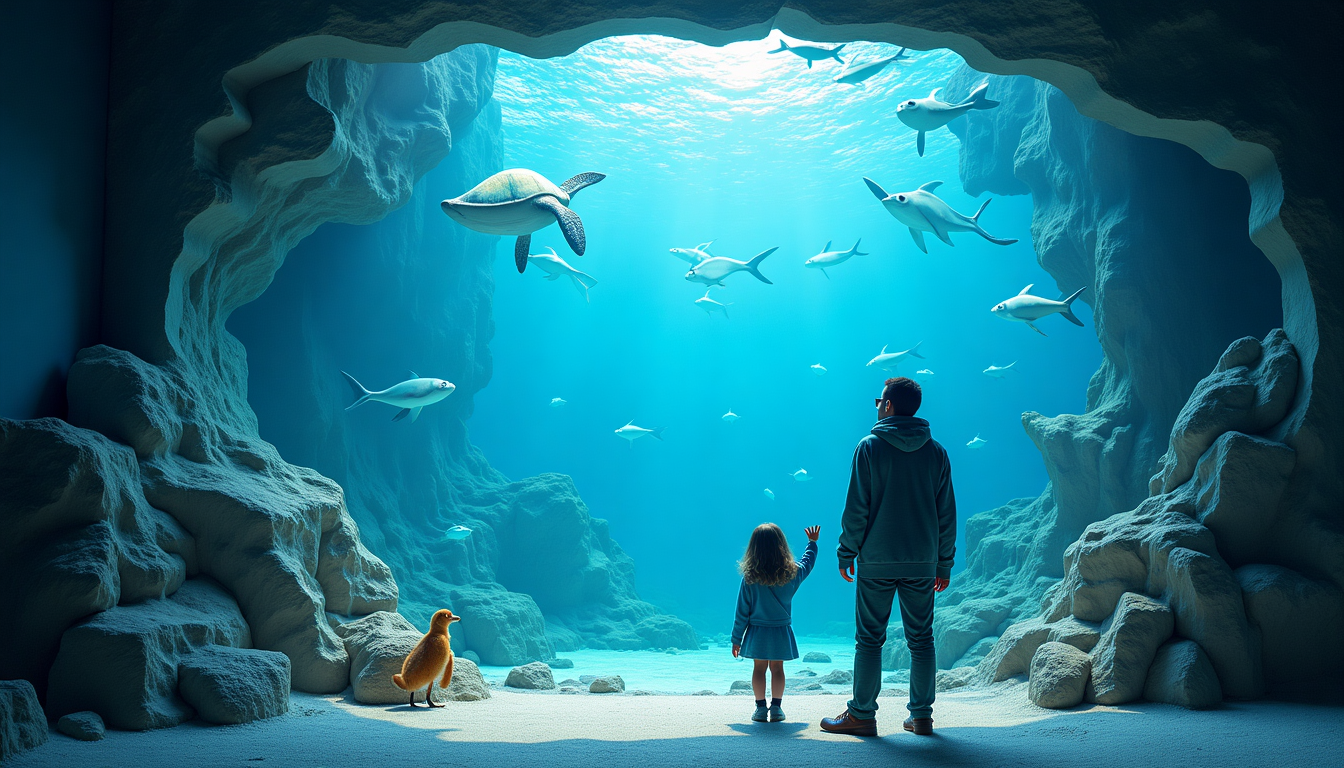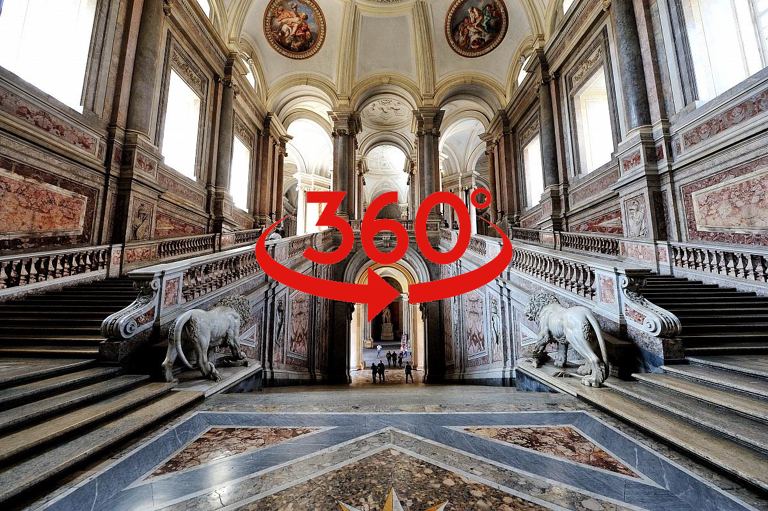The video installations for multimedia museums with immersive experiences, represent a Innovative frontier in the museum sector , redefining how audiences interact with cultural heritage through audio and video solutions. These installations do not limit themselves to presenting objects or works of art, but create real experiential worlds.
Thanks to the use of advanced technologies, such as multimedia projections , Interactive installations and Augmented and Virtual Reality Solutions , museums can offer unique sensory experiences to Engage visitors at 360 degrees. The ability to convey emotions and tell stories through a mix of audio, video and digital interaction allows you to deepen your understanding of the historical and cultural context of the works on display.
These experiences not only entertain, but educate and transform the museum from a simple exhibition venue to a dynamic environment where the public can fully immerse themselves in sensory installations. With the increase in digitization, museums have the opportunity to attract a New generation of visitors , offering engaging content that meets their expectations in an age where technology is an integral part of everyday life. This article will explore the different dimensions of audiovisual installations and their impact on museums, with a focus on HistoriaViva's approach to promoting digitization and innovation.
Table of Contents
What is a multimedia museum?
A multimedia museum is first and foremost a Exhibition space using digital technologies to create immersive and interactive exhibitions. Through the use of projectors, viewers, audio systems and digital solutions, museums offer a three-dimensional visualization and synchronized digital artworks, multimedia installations and videomapping. These immersive exhibits can include forms of augmented or mixed reality, and aim to simplify the visitor experience, especially in a post-pandemic scenario.
What is Video Mapping
Il Video Mapping is an art form that unites Digital Art and technology, creating an experience Immersive for the public. Using Projectors and computers , artists can screen an image or video on Real Objects and surfaces, transforming any space into a environment interactive and engaging. Thanks to the Introduction of technologies as the augmented reality , viewers can make use works in innovative ways, living an experience that stimulates the senses and creativity.
The multimedia exhibitions and Virtual are growing in popularity, attracting millions of visitors to digital art museums and exhibition spaces. Some examples include totem and Interactive Screens which have a Wide range of works, from the Generative Art to the most famous installations. This A combination of art and technology offers a unique way to Visitor to discover of Enjoyment of digital art , making each visit an opportunity to explore new creative dimensions.
What is an immersive experience?
An immersive experience is an interactive adventure that uses multimedia and digital technologies to emotionally engage the visitor. Through the use of High-resolution video projectors , moving images, and LED Flooring , allows you to experience art and technology in innovative ways. These immersive installations can be seen in two different spaces such as art galleries or museums, thus offering an immersive and unique experience for the visitor thanks to digital art.
The Immersive technologies such as: augmented reality, mixed reality and multimedia systems, improve the architecture of art collections, creating "Future Exhibit" . Art and technology merge to create digital installations such as Klimt's, which show the reliability of the best technological solutions in the field of art. The atelier of the museum experience is transformed thanks to reality technologies, offering viewers an engaging and unforgettable experience.
The Importance of Digitization in the Museum Sector
The Digitization in the museum sector represents a fundamental pillar for the future of museums and cultural institutions. As technological advancements accelerate, it has become imperative for the museum industry to embrace digital transformation through interactive displays and immersive solutions. Digitization not only makes cultural heritage more accessible, allowing users to Exploring collections remotely via digital platforms makes art more accessible to a global audience. , but also contributes to the conservation of works , ensuring that historical and artistic information is preserved for future generations.
In addition, digitalization allows museums to collect and analyze visitor data, offering valuable insights to improve the audience experience and optimize marketing strategies. The Multimedia content creation it can enhance existing collections, making works more attractive and understandable to visitors of all ages thanks to audio and video solutions.
Through the use of technologies such as 3D CGI computer graphics And the augmented reality , museums can transform the visit into an engaging and educational experience, which stimulates interest and curiosity through innovative ways of fruition. In an increasingly interconnected and digitized world, museums must find creative ways to interact with the public, break physical and cultural barriers and position themselves as reference points for innovation and culture.
Types of audiovisual installations for museums
Audiovisual installations for museums can take many shapes and sizes, each designed to offer a unique and immersive experience to the visitor, thanks to cutting-edge audio and video solutions. Among the most common types we find Video projections , which can be used to recreate historical environments o visual narratives that enrich the understanding of works of art through advanced audio and video solutions.
The immersive installations , where the visitors are surrounded by images and sounds, they offer an immediate feeling of belonging to that narrative, fostering a deeper emotional involvement. Interactive experiences, such as those based on touch screens or motion sensors, allow visitors to explore additional content, delve into specific themes, and actively participate in storytelling.
Temporary exhibitions can benefit enormously from these installations, allowing curators to update the exhibition content and attract a wider audience. In addition, the use of technologies – such as augmented reality – offers extraordinary opportunities to enrich the visit experience, allowing visitors to view additional information superimposed on physical reality. Ultimately the variety of audiovisual installations allows museums to tell stories in innovative ways, creating a lasting impact on visitors and making art more usable. .
The Augmented and Virtual Reality Revolution
The augmented reality (AR) And the Virtual Reality (VR) are revolutionizing the way museums present their collections and interact with the public. These technologies offer new dimensions of experience that enrich the visit to the museum, transforming the traditional idea of enjoying cultural heritage.
The augmented reality has also been displayed on our website, and allows visitors to point their smartphone or AR device at a work of art to view extra content , such as video, audio, or historical information, that would not be available in a traditional experience. This interactive approach allows the audience to deepen their understanding of the works and to have an experience tailored to their interests, thanks to audio and video solutions.
On the other hand, the virtual reality offers the opportunity to fully immerse yourself in recreated historical environments, allowing visitors to explore places that would otherwise not be accessible, such as archaeological sites or collections preserved in other parts of the world. These technologies not only enhance the visitor experience but also help to educate and raise awareness about cultural heritage conservation issues via museum videos. The Combination of AR and VR It is creating a future where the physical boundaries of museums are being overcome, offering unprecedented opportunities for interaction and learning through digital exhibitions.
Creating engaging narratives through digital solutions
Creating engaging narratives is essential for capturing the attention of the audience and to make cultural heritage more accessible and interesting . Audiovisual installations allow stories to be told through a combination of images, sounds and interaction, allowing visitors to fully immerse themselves in immersive storytelling. Using Visual storytelling techniques , museums can present not only the historical facts but also the emotional and cultural context surrounding the works on display.
These narratives can be adapted to different targets , from children to adults, to cater to a variety of interests and levels of knowledge. By harnessing the power of human emotions, installations can help create a deep connection between the audience and the artworks, turning the visit into an unforgettable experience.
In this context, the possibility of Customize the narrative Through interactive content, it allows visitors to explore their curiosities, making their experience unique and personal. Creating engaging narratives not only enriches the visitor's experience, but also contributes to the educational mission of museums, encouraging an active and critical interpretation of cultural heritage.
The role of HistoriaViva in museum innovation
HistoriaViva stands as a Catalyst for innovation in the museum sector , combining a passion for history with cutting-edge technologies to create immersive and interactive experiences, such as videos for state-of-the-art museums. The digitization of cultural heritage is at the heart of HistoriaViva's mission, which offers a range of services designed to enhance museum collections and promote a more dynamic use of cultural heritage.
Using Artificial intelligence and multimedia solutions , HistoriaViva is able to Develop custom installations that meet the specific needs of cultural institutions. Among the services offered are: immersive projections, 3D content and videos with drones, all designed to enrich the visitor experience and create an engaging narrative around the collections on display.
This approach allows museums to Attracting a wider audience , encouraging greater interaction and participation. Working closely with museum directors and cultural stakeholders, HistoriaViva is committed to creating innovative solutions that promote sustainability and the enhancement of cultural heritage in an era of rapid technological evolution.
Case Study: Successful Examples in Museum Installations
The validity of immersive audiovisual installations is evidenced by Numerous success stories in museums around the world that use audio and video solutions. For example, video mapping can be used to enrich the visitor's experience. Museum of Information Technology Berlin It implemented a series of interactive installations that tell the story of technology through immersive visual and sound experiences, always using innovative audio and video solutions.
Visitors can explore the history of computers through captivating storytelling, combining historical video and digital interactions, transforming an ordinary visit into an exciting journey through time. Another example is offered by the Rijksmuseum in the Netherlands , which used augmented reality and interactive displays to enrich the visit to its famous collection of artworks.
Through a dedicated app, visitors can view artwork in 3D and access contextual information, which allows for a deeper understanding of the works on display. These installations not only attract visitors, but also increase interest in and interaction with cultural heritage, demonstrating the effectiveness of cultural heritage Innovative solutions proposed by HistoriaViva, which include digital art for a more immersive experience. The results obtained by museums adopting these technologies offer a reference model for other cultural institutions that wish to improve their offerings and promote greater public participation.
Conclusion and future prospects
The future of museum experiences promises to be exciting and full of opportunities thanks to technological innovation. With the adoption of immersive audiovisual installations, augmented and virtual reality, museums have the opportunity to attract a New generation of visitors , offering interactive experiences that go beyond simple observation.
The digitization of cultural heritage It is no longer a choice, but a necessity for cultural institutions that wish to remain relevant in an ever-changing world. The opportunities to use AI and other emerging technologies to create personalized, engaging content are endless.
Thanks to these innovations, museums can not only preserve history, but also tell it in ways that stimulate public curiosity and engagement. The challenge for cultural institutions will be to integrate these technologies in a strategic and sustainable way, ensuring that innovation does not compromise the educational and cultural mission. With a collaborative and future-oriented approach, museums can become centres of learning and innovation, thus contributing to keeping culture and history alive for generations to come through innovative and engaging ways of use.


